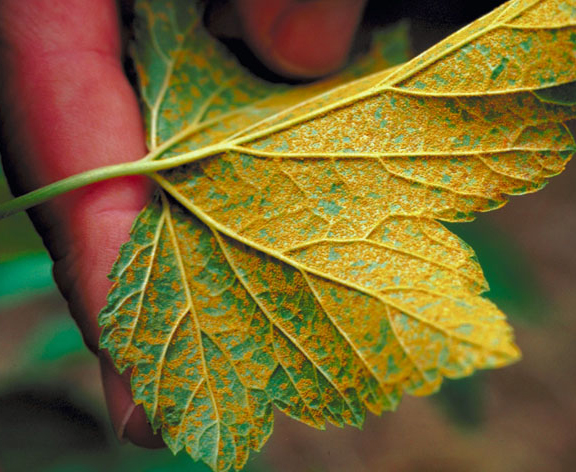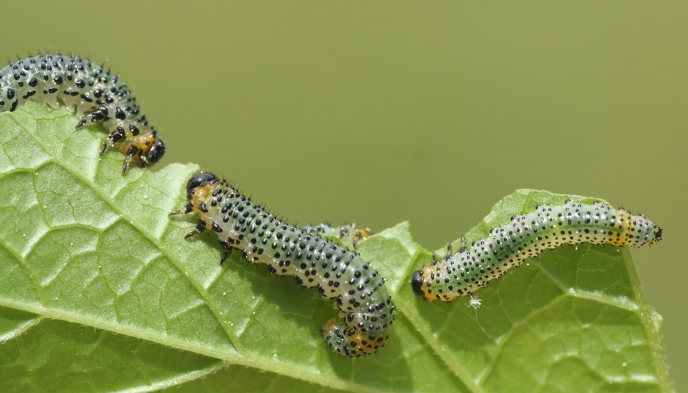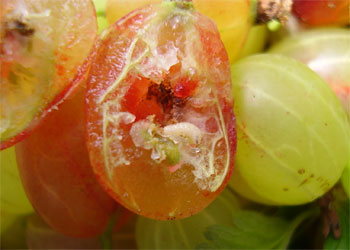growing currants & gooseberries
Currants and gooseberries are shrubby bush fruits that do very well in most parts of the Pacific Northwest. Both currants (top image) and gooseberries (bottom image) are in the Ribes genus and often referred to collectively as “ribes.” They both come in a variety of colors ranging from black, purple, red, pink, and white. Generally, gooseberries have thorns and currants do not. Gooseberries are also larger, about the size of a grape, and currants are about the size of a pea or peppercorn.
Site Selection
While currants and gooseberries are tolerant of many soil types, they prefer well-drained organic rich soils with a pH of about 6.5-7. The best fruiting will be in full sun sites, but they will also fruit in partial shade. Space the plants 5 feet apart. Remove the flowers and fruit the first summer to help establish strong root systems. Both are self-fertile.
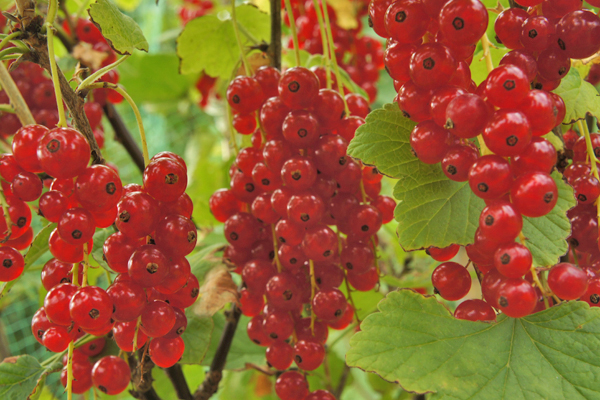
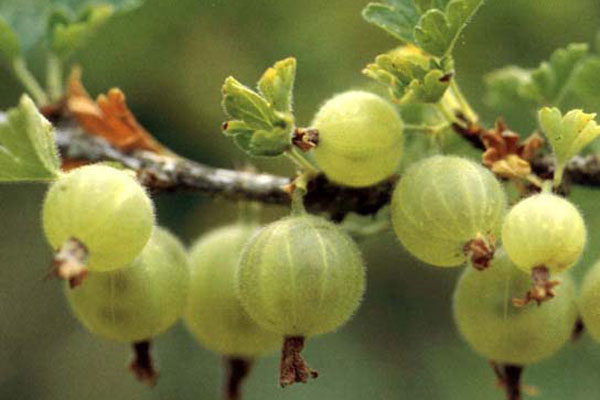
Pruning and Training
Most currants and gooseberries are grown as freestanding, multi-stemmed bushes. They can also be trained as standards (small bushes on a short trunk), or fan trained against a fence or wall. The goal in pruning gooseberries and currants is to develop an open, vase shaped bush with even spaced branches.
At planting, select 3-6 healthy, well-spaced canes; remove the rest and prune the remaining canes to 6″-10″. A strong, healthy, mature plant should have about eight bearing canes, with younger canes eventually replacing the oldest. After the first year of growth, during the dormant season remove excess shoots leaving the 6-8 strongest. At the end of the second growing season, leave the 4 or 5 best one-year-old shoots and up to 3 or 4 two-year-old canes. At the end of the third year, prune so that approximately 3 or 4 canes of each age class remain. By the fourth year, the oldest set of canes should be removed, and the new canes allowed to grow. This system of renewal ensures that the plants remain productive.
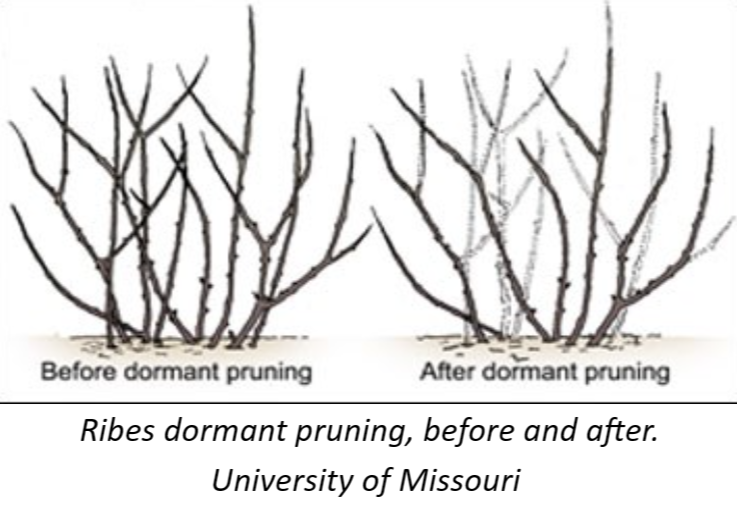
Pests & Disease
Ribes have some pest and disease pressure, though not as much as some other fruit. Aphids can feed on the undersides of the leaves damaging the foliage and can be controlled by washing off with strong jets of water or spraying insecticidal soap. Other notable pests are listed below. Diseases on Ribes are uncommon but possible. Powdery mildew can occur, which is best prevented by proper pruning for air circulation or planting resistant varieties. Ribes are also a host of white pine blister rust and shouldn’t be planted near 5-needle pine species unless the ribes cultivar is resistant.
Currant Worm
The most common pest is the imported currant worm, a larva from a type of sawfly. The larvae can defoliate a bush in a matter of days. The adult flies emerge in April and lay eggs that hatch in 2-3 weeks. The ½” long larvae are small, black spotted green worms with black heads. Using a foliar insecticide such as horticultural oil when they first appear can control their populations. Handpicking small populations is also a good control. Floating row covers can also prevent the flies from reaching the foliage.
Gooseberry Maggot
The gooseberry maggot, also known as currant fruit fly, can make the fruit unusable. The adult fly emerges from the soil in April, and lays eggs on the forming fruit. The resulting maggots feed within the berries. Apply foliar insecticides such as Neem oil extracts or Spinosad when the adult flies are first noted or cover the bushes with floating row cover to keep the flies from reaching the fruit. Dispose of infested fruit to Placing tarps on the ground around the bushes prevents the larvae from entering the soil to pupate.
